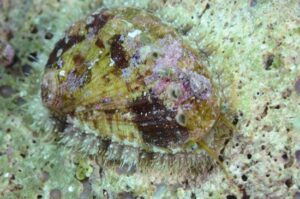I was very curious about the new X-Wing Carbon fins and chose the longer X-Wing C-Evo fins because of my height (194 cm). In my opinion, it is extremely clever to provide freediving fins in different lengths. Why? I find it strange when someone my height uses the same blade length as a person who is 150 cm tall.
1. Fin length should be related to body size (small people= short fins, tall people = long fins). Some instructors are even of the opinion that weight should be taken in to consideration when choosing a fin type. Personally, I would always consider length in relation to body height and blade hardness in relation to weight.
2. Is it a fin that is mainly used for travelling? If so, the smaller size of the X-Wing C-S may play a role. Also because the foot pocket of the carbon fin is much easier to remove than that of the earlier Razor generation and a dismantled C-Evo fits easily into luggage.
3. The choice of fin also depends on the type of fin stroke used. The size of the amplitude also plays a role. I have to admit that I can’t say exactly what kind. Theoretically, a long fin with a large amplitude (the fins move further apart than with a small one) would guarantee better propulsion. However, I have observed something different with various advanced freedivers and this has to do with fin stiffness.
Different degrees of fin stiffness
In the past, hard or medium-hard fins were often available. The stiffer the fin blade, the more propulsion it generates. A few days ago, I had the pleasure of doing a photo shoot with Mares Ambassadors Ivana Orlovic and Janez Krajnc in Montenegro. With them was Mares Ambassador Niksa Miljanic – a freediver and spearfisher from Montenegro. I had the opportunity to try out his X-Wing C-S fins while Ivana photographed him in my C-Evo fins. I dived with the medium-hard and shorter versions of the carbon fin. Especially at the beginning of the dive the buoyancy is strong, and ideally you overcome this resistance with as little lead on your weight belt as possible, plus a perfect duck dive. With Niksa’s C-S fins on my feet, I was amazed at how easily the buoyancy was overcome and how quickly I was able to reach the neutral point and enter freefall. I am pretty sure that the slightly harder fins are a great way for spearfishers to get to the depth quickly.
If you look at world-class freedivers today, you will notice that they use very small fin strokes in both dynamic and deep diving. The reason is that this type of progress saves a lot of energy and therefore oxygen. Softer fins facilitate this type of progress.
Softer fins do not have the same acceleration capacity as harder fins, but have a beneficial effect on leg strain, especially on very deep dives or long sessions with deep safety dives.
The new foot pockets are narrower compared to the Razor foot pockets and correspond much more to the actual foot shape. From an instructor’s point of view, I am happy that the small foot pockets now leave nothing to be desired, with a size that suits everyone. With the Razor, almost everyone had to put on neoprene socks, whereas the X-Wing foot pockets perfectly fit barefoot. Personally, I always recommend neoprene socks because it reduces the risk of blisters or open wounds. It also helps against the cold in a lake, and overall it protects the foot when going into the water, until you put on the fins.
My conclusion
I am thrilled with both versions. I prefer the C-S for snorkelling, sea trekking and holidays, and the C-Evo for deep diving sessions. The fin’s side rails are minimal on both models, so they hold their position and push the water backwards, but at the same time do not have as much rubber as the Razor. The blade can generate the best possible propulsion with the smallest possible effort. I don’t know any other fins where the effort:return ratio is as perfect as with the C-Evo.
The post The new Mares X-Wing C-S and X-Wing C-Evo carbon fins – A review appeared first on Mares – Scuba Diving Blog.
Read MoreDiving, C-Evo, C-S, Carbon, fin, fins, freediving, pure passion, X-WingMares – Scuba Diving Blog


